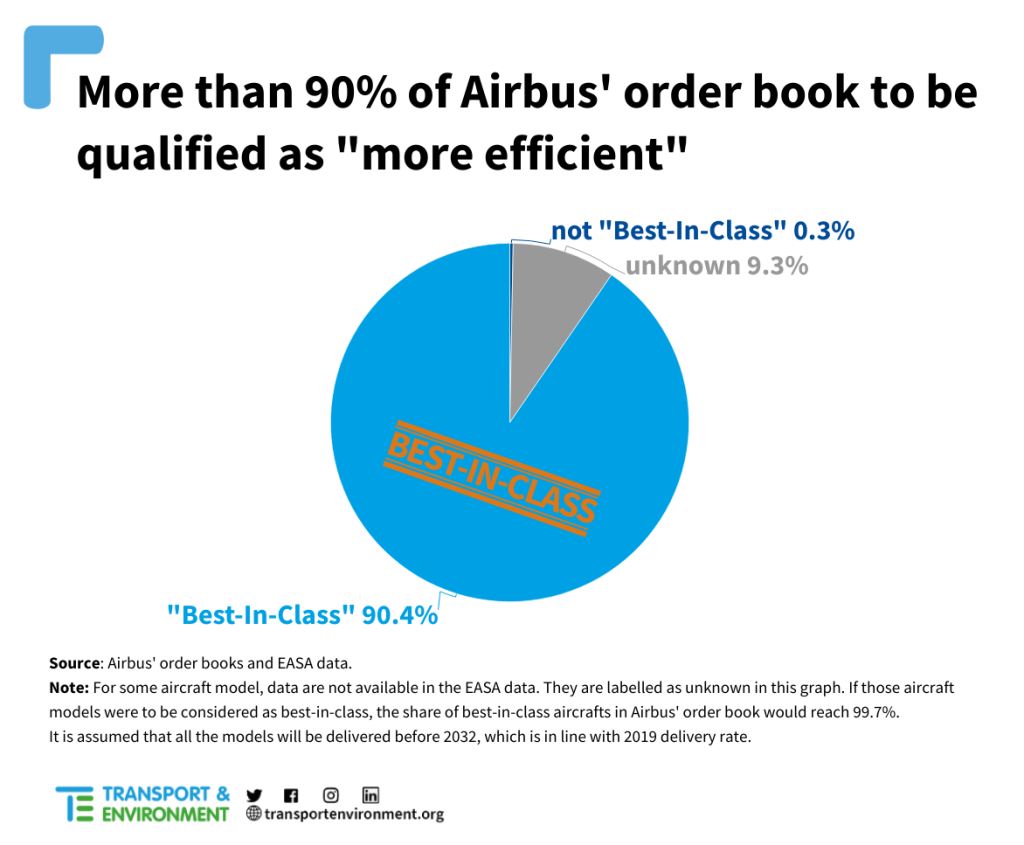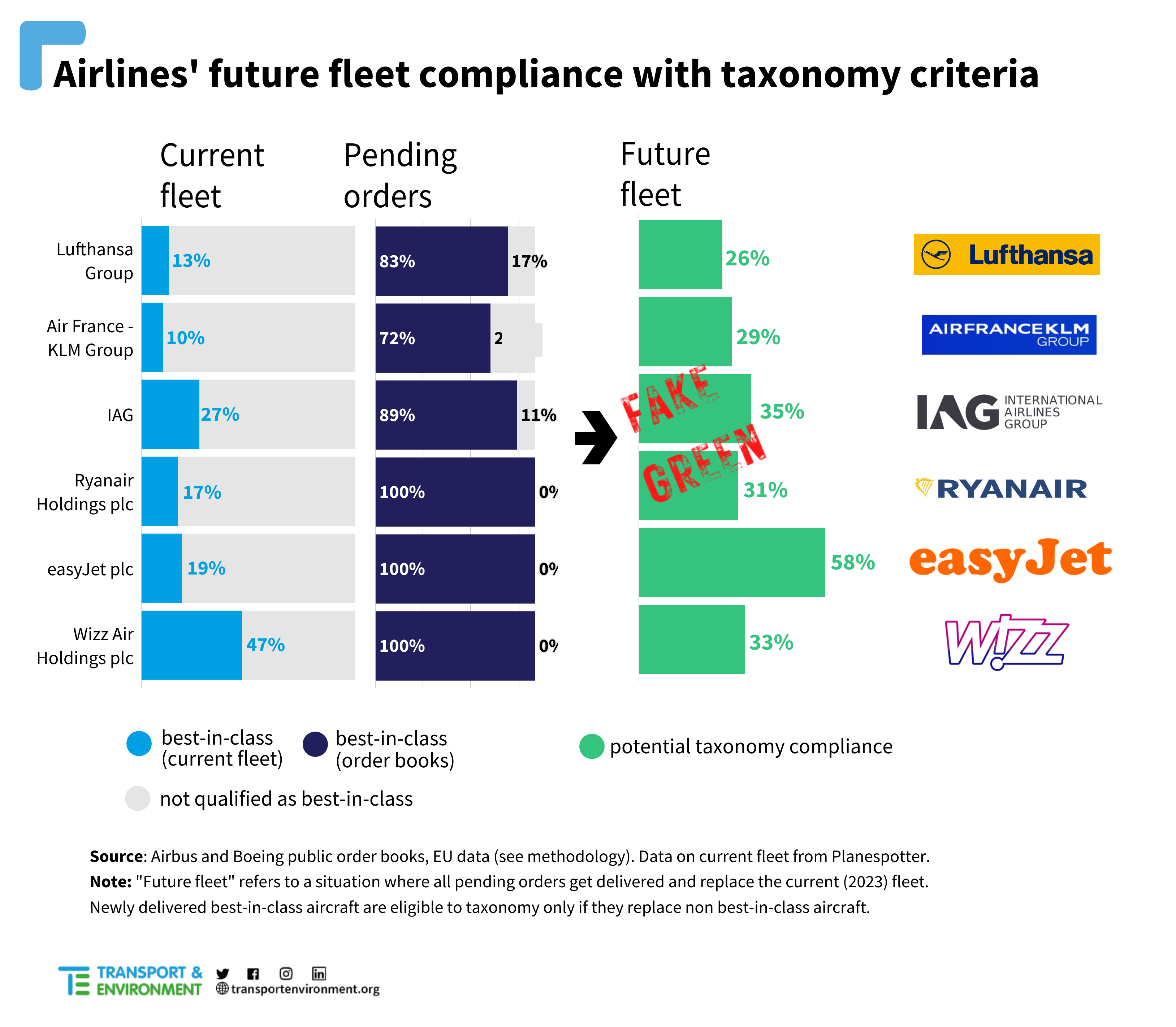The EU taxonomy for sustainable investments could greenwash over 7,000 Airbus aircraft, new data by T&E finds. This represents over 90% of Airbus’ future aircraft orders. Planes qualify for the criteria if they meet weak fuel efficiency standards, even though they still rely almost exclusively on fossil fuels.
The European Commission is currently discussing criteria for aviation to be included in EU taxonomy rules. Under the draft criteria recommended in 2022 by the Platform on Sustainable Finance, traditional aircraft qualify as “best in class” if they are more efficient[1] than older generation aircraft. These aircraft then meet the EU Taxonomy’s criteria only if they are replacing, not expanding an airline’s fleet.

Even though more fuel efficient planes emit less, these emissions savings are only around 15-20%. Critically, this has not stopped CO2 emissions from the sector from growing exponentially in recent decades. CO2 emissions increased by 129%[2] between 1990 and 2017 despite fuel efficiency of new aircraft improving by 18%[3] over the same period.
Jo Dardenne, aviation director at T&E, says: “Sticking a green investment label on thousands of highly polluting planes is an act of pure greenwashing. The European Commission must reverse course. Unsurprisingly, Airbus is lobbying relentlessly to ensure aviation stays in the taxonomy. But this would be a mere smokescreen that allows them to sell dirty planes for years to come. Instead, they should focus efforts and investments in zero-emission aircraft that are truly green.”
Airlines will also be affected by the EU taxonomy. For the time being, the majority of Europe’s airlines’ fleets don’t qualify as “best in class”. But their future planes will. 100% of order books by Ryanair, easyJet and Wizz Air could be considered “best in class”, as they plan to buy new generation, more efficient aircraft in the years to come. If these planes replace older aircraft, they will be compliant with the taxonomy. As a result, up to 58% of easyJet’s fleet could be taxonomy compliant, despite exclusively relying on fossil fuel to operate in the next decade.

Airlines will not only see part of their investments into future fleets rubber stamped as green, but the revenues generated from flights on these planes will also carry the same label. In practice, this means that a flight from Paris to New York, on board a slightly more efficient aircraft, could be considered green in the eyes of investors.
Transport & Environment is calling on the European Commission to amend the criteria for aviation in the EU Taxonomy. These should strictly endorse new technologies with true emissions reduction potential, such as zero-emission aircraft and high quality sustainable aviation fuels.
Note to editors: Transport & Environment (T&E) was part of the Platform on Sustainable Finance until 14th of September 2022 and left the group over a lack of independence. T&E does not support the criteria under consideration for aviation, as it greenwashes the aircraft manufacturing’s legacy business and provides no incentives for genuinely green investments. Airbus, the EU’s main aircraft manufacturer, was co-drafting criteria for its own products.
[1] Aircraft are best in class if they meet a certain percentage of improvement to ICAO’s CO2 efficiency standards. Research has shown the most advanced new aircraft delivered in recent years are already ahead of ICAO’s standard by 10%–20% on average. https://theicct.org/news/epa-co2-standard-aircraft-fuel-efficiency-jul2020
[2] EEA, Greenhouse gas emissions from transport in Europe — European Environment Agency
[3] ICCT, Fuel burn of new commercial jet aircraft: 1960 to 2019


